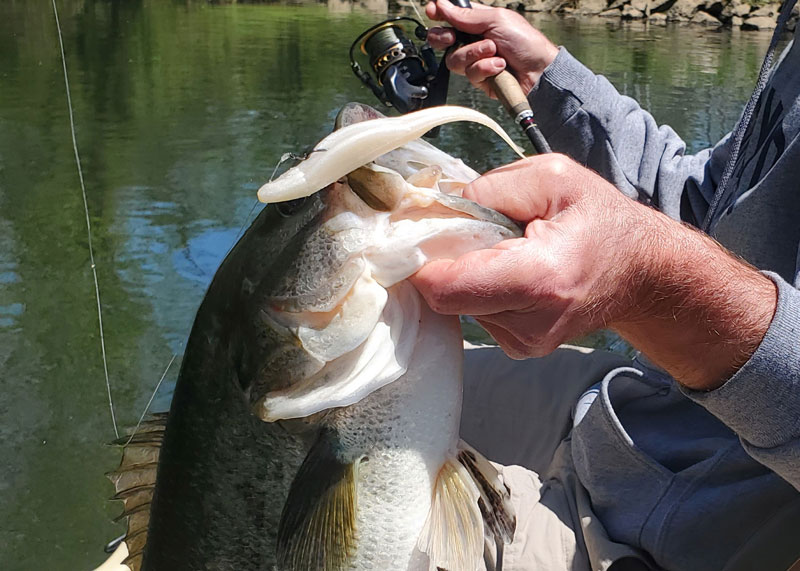Flukes are a great choice for fooling predators into pouncing, especially when you need a weedless option that sinks slowly and can be used in shallow water and/or thick cover. And yes, largemouth bass are a prime candidate for targeting with the fluking technique. Ready to try fluking? Get yourself some four- or five-inch fluke tails and 3/0 to 4/0 fluke hooks (the ones with the funny bend just past the eye, properly called an offset shank). Tie the hook to the end of your line, and slide the tip of the fluke onto the hook. Then double the hook back and insert it through the body so it pops out of the hook pocket with the point exposed but lying against the soft plastic. Now, you’re ready to:
- Cast out as close as possible to the target cover.
- Twitch the bait a bit to make it look alive without moving it away from the cover, as it ever-so-slowly sinks.
- Twitch a bit more and reel in some line so the fluke appears to be swimming in zigs and zags away from the cover.
- Speed up as the lure gets away from the target zone, but keep twitching and swimming the fluke so it zigzags right up to the shoreline or boat because sometimes fish will follow it for a while before striking. If not, pick the fluke up and recast.
- When a fish strikes, wait for at least two to three seconds to let it take the fluke all the way into its mouth before setting the hook. When you do set the hook do so with gusto (and note that a rod which is too limber at the top can inhibit hook-setting ability with flukes).
